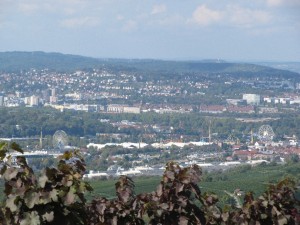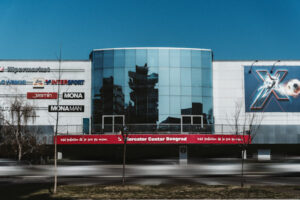Urbanization and widening polarization between the “best and the rest” of European cities continue to gather pace and are increasingly shaping the location decisions of international retailers. Research for Redevco’s latest “City Attractiveness Report” shows that city quality plays a growing role in the urban mix of factors determining the future success of European urban centers.
Marrit Laning, Redevco’s Head of Research & Strategy, said: “Bigger European cities are continuing to expand at the expense of more secondary urban locations and rural areas as urbanization—a trend that only really took off in the nineties—accelerates. ‘Soft factors,’ such as the presence of historic monuments and other tourist attractions, and the representation of creative professionals in a population, play a growing role in the attractiveness of cities, drawing people in search of job opportunities and leisure destinations. These gravitational forces have not gone unnoticed by international retailers, who are following the crowd in their location decisions.”
Seven German cities among the top 25
From the more than 800 European cities ranked in Redevco’s City Attractiveness Model, the Top 25 (see table) heading the “Excellent” category* have remained relatively stable during the past three years. The quality and performance of these cities remains undisputed. London and Paris hold the top two slots, reflecting their status as global retail destinations commanding the highest prices and rents. German cities occupy seven of the 25 highest places, as the “weight of money” from investors targeting the market has led to a solid performance for retail property. Berlin moved up to fourth from sixth place in the rankings this year, ahead of Hamburg and Vienna and behind Munich.
Europe is emerging from the economic crisis and employment growth has turned positive in all markets, but large differences remain in the relative performance of cities according to the composition of their local economies. Currently, retail, and real estate are important contributors to economic growth and cities with a substantial exposure to these sectors generally demonstrate higher growth rates. Analysis also shows that diversified economies are less vulnerable to external shocks. The current events in the automotive industry, for example, might have a severe impact on a city like Stuttgart, with sizeable direct and indirect links to car production.

A quest for higher returns in mature markets
Investment activity has increased, with yield compression as a consequence, but occupier markets have largely lagged behind. In 2014, there was a clear tendency for investors to creep up the risk curve and be more willing to invest outside of the two top-ranking city categories in anticipation of rising rents. This trend was less pronounced in the first half of 2015 and retailers mostly haven’t followed them to the same extent.
Retailers are responding to evolving consumer trends and the attractiveness of European cities by focusing their investments on openings in centers within the top two quality baskets.* Redevco’s survey of retailers shows that retailers have closed 11% of their existing stores. Those stores were primarily located in the lower ranking cities. The total number of outlets across Europe has only declined by 5%, however, due to a significant number of store openings, mainly in high-ranking cities.

Tourists Flock to Quality Cities
Tourism is recovering across Europe and is a strong supporting factor for retail sales in popular destinations. Amsterdam is a good example of this. Although the Dutch capital’s economic fundamentals have lagged compared to other main West European urban centers, tourist numbers have jumped by 12% this year—compared with 5% for the Netherlands as a whole and an average of 3% in Europe—leading the city’s recovery. Brighton’s seaside location close to London is another magnet for visitors and it also has an affluent and creative population. The town has a large proportion of independent and boutique stores and ranks 7th in the UK and 34th in Europe as a “Very Good” retail experience destination in Redevco’s City Attractiveness model, roughly on par with Bordeaux in France and Munster in Germany.
Laning concluded: “Traditional datasets such as sales figures, footfall, demographics, and GDP are the main touchstones for retailers in determining their investment strategies, but the Redevco City Attractiveness Model offers them a deeper, more nuanced, view. Our model captures both data about the fundamentals as well as the ‘soft factors’ that are increasingly important in determining the likely future performance of a city as a retail location.”
* Redevco’s City Attractiveness Model comprises 19 different indicators grouped into four main categories: population, economy, retail property market and city quality, that are weighted to derive a city’s ranking. This weighting is then enriched with the local knowledge of Redevco’s seven country teams that enables the groupings of locations into five “Quality Baskets,” ranging from “Excellent” to “Poor,” to identify a total investment grade within a range of around 200 European cities.
Top 25: Solid and best in class
- London
- Paris
- Munich
- Berlin
- Hamburg
- Vienna
- Stockholm
- Milan
- Amsterdam
- Copenhagen
- Manchester
- Madrid
- Oslo
- Barcelona
- Rome
- Zurich
- Cologne
- Prague
- Frankfurt
- Stuttgart
- Dusseldorf
- Glasgow
- Edinburgh
- Dublin
- Istanbul
Source: Redevco





